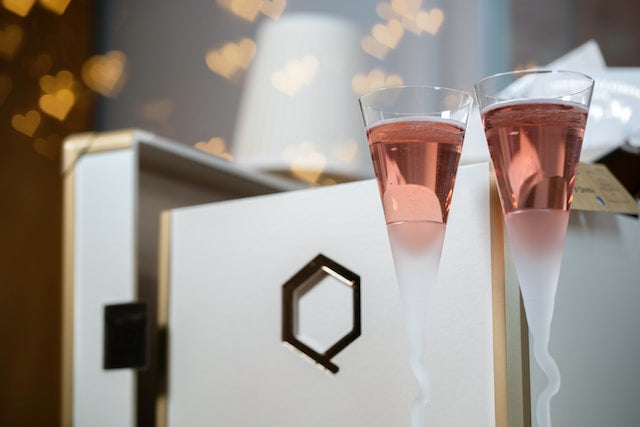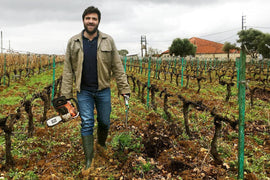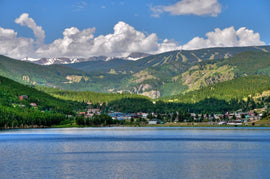Back to France
As you may recall, the Greeks and Phoenicians began producing wine a long time ago, and during this time, rosé was “invented”. The winemaking process involved separating the juice from the skins and seeds when it started fermenting. Since the color of red wine primarily comes from the skins, ancient wine initially had a pink hue. However, it would eventually turn tawny or brown due to exposure to air, as there were no bottles or sulfur dioxide available as protective measures. In due course, it was discovered that by exerting pressure on the remaining skins of the "free run" juice, a greater volume of wine could be extracted from each harvest. This wine had a deeper hue (as some pigment was released during the pressing process) and possessed a significantly stronger taste. Valuing efficiency (and profit), the Romans preferred this bolder wine - perhaps believing that robust wine produced formidable soldiers?
The trend for dark wine dwindled after the decline of Rome, and throughout the centuries, pale wine was regarded as the superior variety enjoyed by nobles and monarchs, while the darker pressed wine was reserved for the common people (with the harshness frequently concealed by additives and spices).
The resurgence of Rosé in France was fueled by the automobile, specifically the construction of highways connecting Paris to Provence and Languedoc after World War II, which led to an influx of Parisians traveling south in search of sunshine. Upon reaching the Riviera, French vacationers found themselves in need of a refreshing beverage. With limited options, as local wineries primarily produced red wines that were too heavy for the hot southern climate, they turned to the abundance of pink wine available, which proved to be a light, invigorating, and affordable choice. And so, the indulgence began!
Our sparkling rosé comes from the House of Langlois-Chateau, which is based in Saumur in the Loire Valley. It was created in 1912 by Edouard Langlois and his wife Jeanne Chateau, with the help of the Baron de Bodman. In 1973, Maison Bollinger from Ay-Champagne acquired majority ownership of Langlois Chateau.
Our still rosé comes from Chateau de Fontarèche. With a history dating back to the tenth century (the first mention of Fontarèche can be found in a deed dated 984), the Chateau de Fontareche consists of 200 hectares that is encircle by a moated fortress constructed in the 12th century by Archbishop of Narbonne. It has been in the ownership of the Comte de Lamy’s family for nine generations, but there is nothing remotely antique about the methods they now employ. The 160 hectares planted to vine lie equally in Corbieres appellation and the surrounding IGP’s. The multiplicity of terroirs in this expansive terrain enables them to grow no fewer than 17 different varieties, including some interlopers like Picpoul Noir.
Think Pink!
Carrie Upson- General Manager
|
Langlois-Chateau Cremant de Loire Rosé |
|
|
Region/Country of Origin: Loire Valley, France |
About the Vineyards: Langlois-Chateau owns and manages 175 acres of the best AOC vineyards in the Loire Valley. For their Crémants they have an intensely terroir-focused approach of drawing the best characteristics from 6 distinct vineyard areas and soil types in order to create complex and refined wines. Soils: The Crémant Rosé is hand-picked from 2 specific terroirs with chalky-clay soils perfectly suited to Cabernet Franc and Pinot Noir. Farming: The winery maintains a sustainable approach to vineyard management and holds the “Terra Vitis” certification. About the Winemaking: Variety: 70% Cabernet Franc, 30% Pinot Noir Fermentation: Treated far beyond the category standards, Langlois-Chateau operates at levels of only the very top Champagne producers. Grapes are hand harvested in small bins, pressed gently and fermented in stainless steel tanks. Aging: At least 18 months on lees, with reserve wines incorporated. Tasting Notes: “ Made completely from Cabernet Franc and Pinot Noir, aged 18 months on lees in bottle, this bright, juicy, delicious rosé sports a pink/salmon color as well as classic notes of strawberries, cherries, and flowers. It’s fresh, lively, and fruit forward, and perfect for drinking over the coming year or two” 91 Points James Suckling |
|
Production Manager: Jean François Liegeois |
|
|
Price: $27.99 bottle/ $302.29 |
|
|
Suggested Food Pairing: Salt and pepper prawns with pineapple dipping sauce, Cured trout with fennel salad and fish crackling, Tuna stuffed red peppers, Chicken cherry almond salad. |
|
Ch. de Fontarèche 2022 Piquepoul Noir Rose IGP Pays d'Oc |
|
|
Region/Country of Origin: Languedoc, France |
About the Winery: Currently led by winemaker, Vincent Dubernet, a fifth-generation oenologist who joined the team at Fontarèche as Director of Winemaking in 2008, Fontarèche produces an assortment of impressive wines sourced from their 160 hectares of vines planted equally in the Corbières AOC and the surrounding IGP’s. Of the more than 17 different grape varieties planted throughout their holdings, Fontarèche boasts four hectares of very rare Piquepoul Noir, which lends itself perfectly to rosé. Indigenous to the Languedoc, most of the vines were destroyed following the phylloxera epidemic. The 2022 vintage marks the first time that Fontarèche has produced a rosé exclusively from this fascinating grape. About the Winemaking: 100% Piquepoul Noir from a young plot planted in 2017. The grapes underwent an unsulfured machine harvest, before being destemmed and then crushed. The must saw skin maceration for 90 minutes in a closed-cage, stainless-steel press, long draining without pressure and limited rotations. After a gentle pressing with immediate separation of the fractions and a static cold settling (at 39 °F) for five days; the juice was carefully racked and fermented. The young wine saw lees contact for an additional ten days after alcoholic fermentation, before sulfur addition. No malolactic. The young wine was aged for three months in stainless steel before being gently fined and filtered before bottling. Tasting Notes: Faintly minty, with great backbone, the wine brings an original expression to the genre of southern French rosé that lifts it high above the crowd of banal if technically sound wines that drown the market. Pale salmon pink hue. Delicate scents of fresh red berries, followed by flavors of Alpine strawberries, tart cherries, raspberries and a touch of lemon flesh. Fresh, precise and graceful on the palate, this delicious expression of rosé exhibits balanced acidity and a softly fruited, slightly mineral finish. A real original. |
|
Winemaker: Vincent Dubernet |
|
|
Price: $16.99 bottle/ $183.49 |
|
|
Suggested Food Pairing: Shellfish platter, Cod fritters, Fried calamari, or tapas. |
|
Photo by Jaime Nugent on Unsplash





